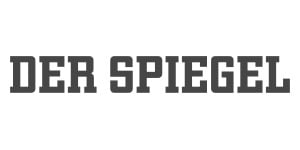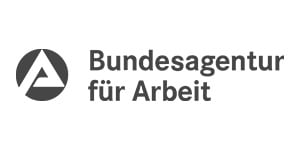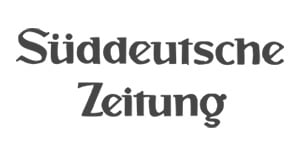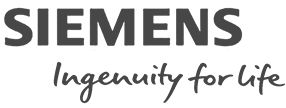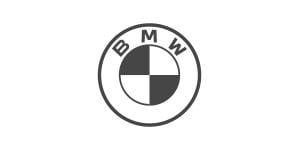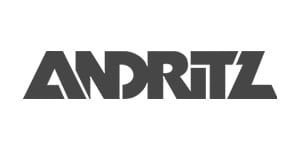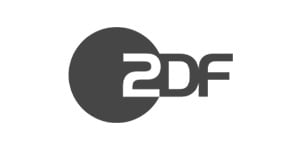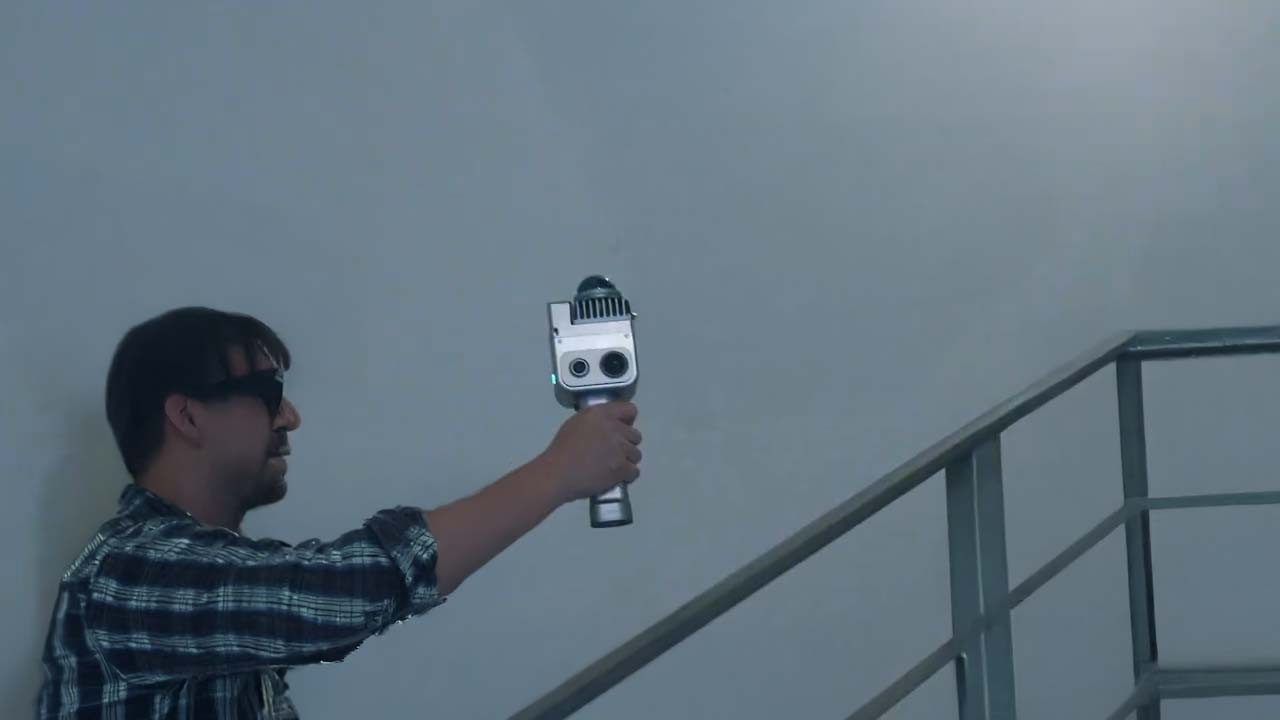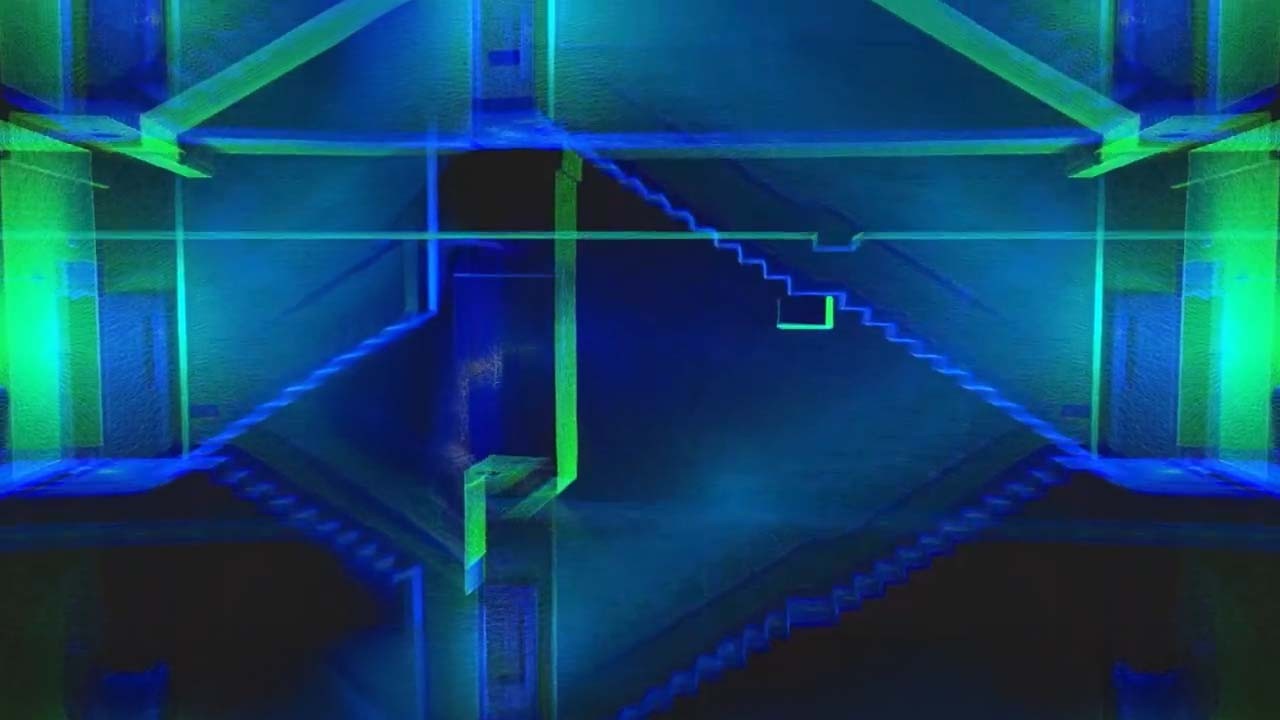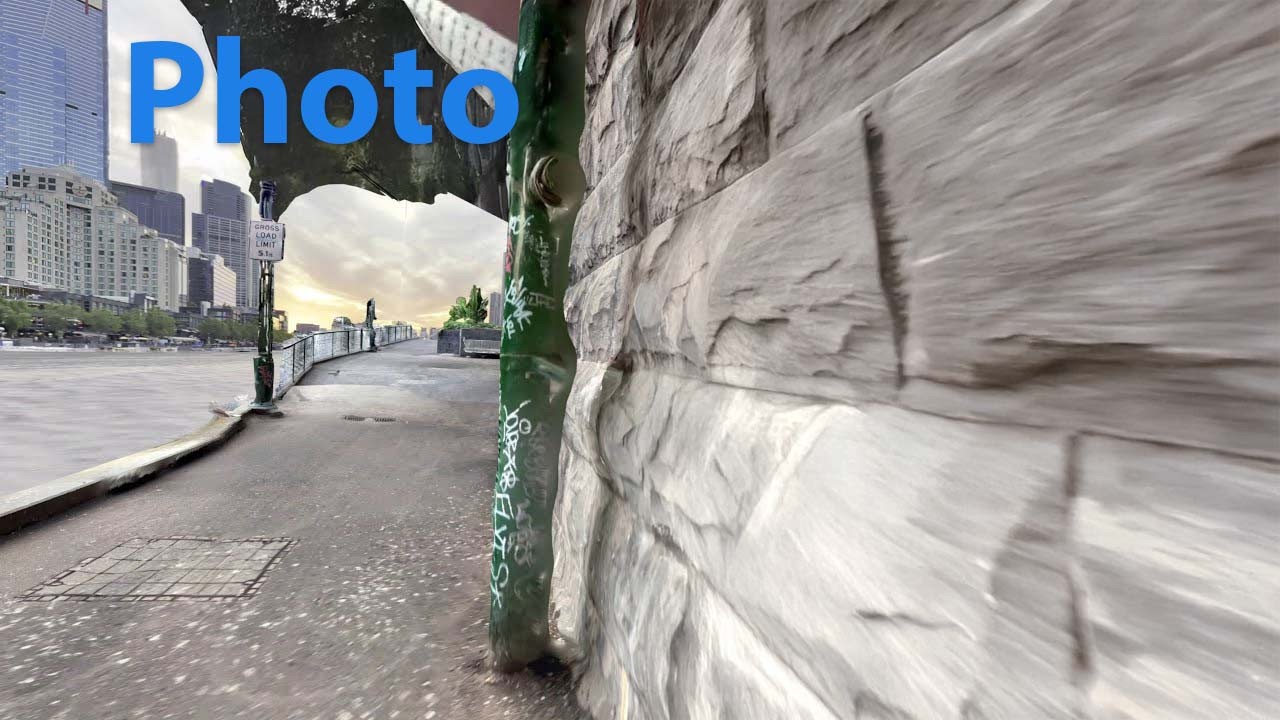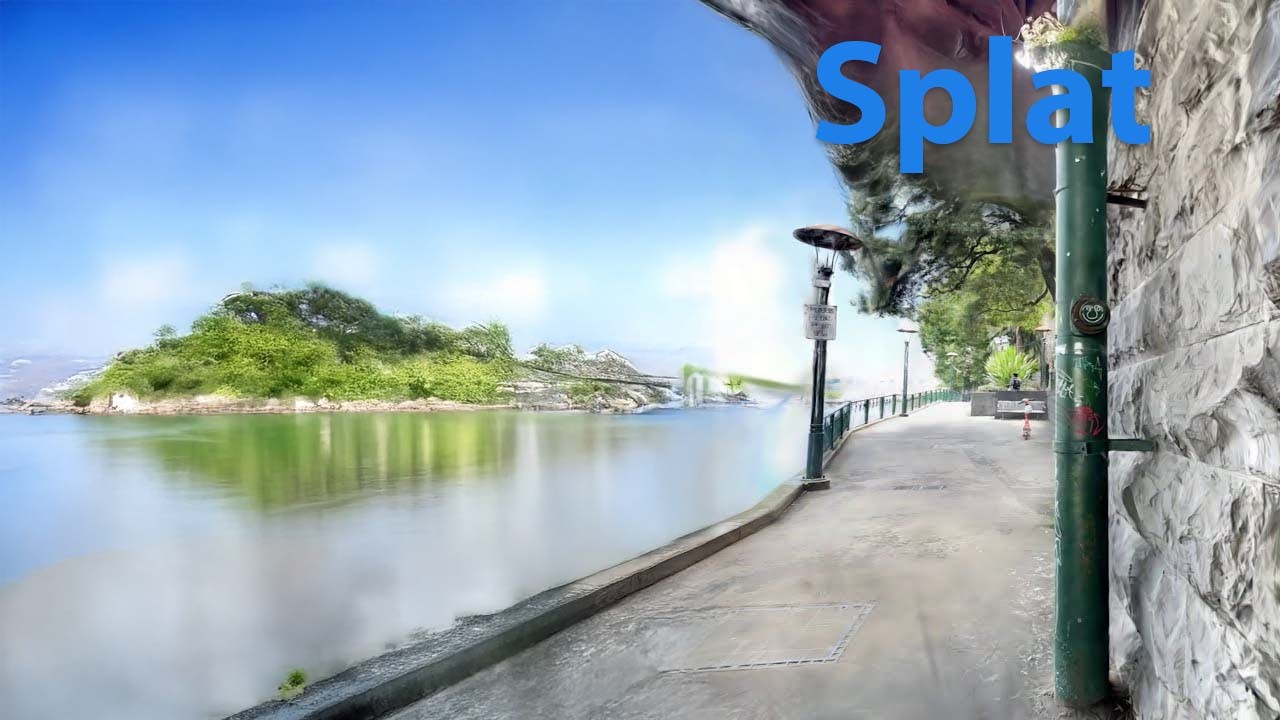Gaussian Splatting – Revolution in 3D Visualization
Gaussian Splatting is a groundbreaking technique for photorealistic 3D rendering based on high-precision point clouds. Instead of using traditional polygon models, this method relies on numerous dynamic color points that adapt flexibly to lighting and perspective. This results in detailed, vibrant 3D models with unparalleled efficiency.
- Incredible Detail: Finest surface textures are accurately reproduced without manual modeling.
- Lightning-fast Processing: Unlike classic 3D scans, tedious post-processing is eliminated – models are immediately usable.
- Perfect for VR, AR & Digital Twins: Due to small file size and high performance, Gaussian Splatting is ideal for interactive real-time applications.
- Cost-efficient & Sustainable: Faster creation of high-quality digital content reduces costs and resource consumption in industry and media production.
Thanks to Gaussian Splatting, photorealistic 3D visualizations are more accessible than ever for companies in architecture, product design, training, and digital entertainment. Discover the future of immersive 3D technology!
Key Applications of Gaussian Splatting
Photorealistic 3D Visualization:
Gaussian Splatting enables highly detailed 3D models with realistic lighting and textures. Companies in architecture, product design, and digital twins benefit from rapid capture and impressive display.
Efficient 3D Scanning for Industry & Production:
Gaussian Splatting allows machines, production facilities, or components to be captured in detail – faster and more data-optimized than traditional 3D scanning methods. This reduces post-processing and facilitates use in VR, AR, or simulation software.
Immersive Experiences in Marketing & Training:
From interactive product presentations to virtual training rooms – Gaussian Splatting opens new possibilities for presenting complex content clearly. Whether in VR applications, web visualizations, or AR displays – realistic 3D content enhances engagement and comprehension.
Discover how Gaussian Splatting can revolutionize your 3D workflows. Benefit from realistic, efficient, and flexible visualization technology.
3D Gaussian Splatting vs. Photogrammetry
Faster Processing: While photogrammetry relies on numerous shots and often time-consuming post-processing for detailed 3D meshes, Gaussian Splatting provides ready-to-use models without complex retopology.
Detail Accuracy vs. Data Volume: Photogrammetry produces extremely precise, textured surfaces that result in large polygon meshes and high data volumes, whereas Gaussian Splatting offers lighter and more flexible models through point-based representations.
Lighting and Texturing: Photogrammetry often requires manual adjustments for lighting and materials, while Gaussian Splatting calculates real lighting and color data in real-time for photorealistic results.
Cost Efficiency and Time Saving: Photogrammetry is characterized by complex processes and long processing times, while Gaussian Splatting provides a cost-efficient alternative with reduced effort and quick, accurate results.
How to reach us!
Email: info@visoric.com
Phone: +49 89 21552678
Contact Persons:
Ulrich Buckenlei (Creative Director)
Mobile +49 152 53532871
Email: ulrich.buckenlei@visoric.com
Nataliya Daniltseva (Project Manager)
Mobile +49 176 72805705
Email: nataliya.daniltseva@visoric.com
Address:
VISORIC GmbH
Bayerstraße 13
D-80335 Munich
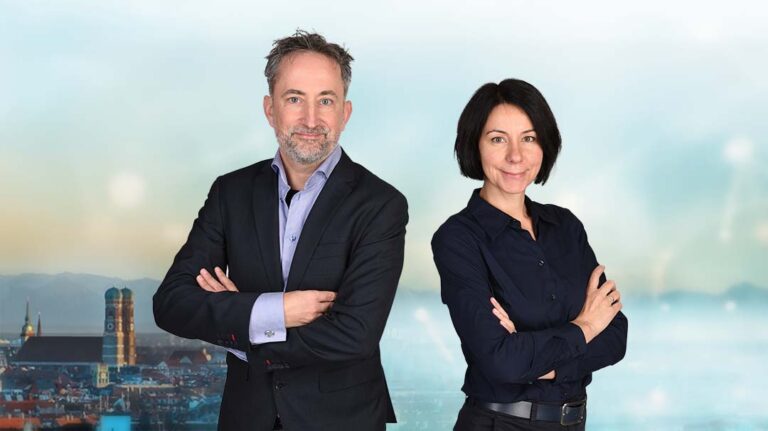
Questions about Gaussian Splatting?
If you want to learn more about the versatile applications and benefits of Gaussian Splatting, we are happy to assist you. Our experts provide personalized consultations and answer your questions – from technology to practical application.
Use our contact form to send a non-binding inquiry. We look forward to hearing from you!
Gaussian Splatting in Practice – Successful Use Cases

Gaussian Splatting in Architecture and Real Estate
Innovative Applications:
- Virtual Tours: Construction projects, real estate, and interiors can be visualized realistically using Gaussian Splatting for highly detailed 3D models.
- Efficient Planning: Gaussian Splatting enables high-quality 3D scans for optimized construction planning and integration into CAD and BIM software.
Advantages:
- Faster Project Approvals: Investors and clients can digitally experience properties beforehand and make informed decisions.
- Cost-Efficient: High-quality scans are possible with standard cameras – no expensive specialized equipment needed.
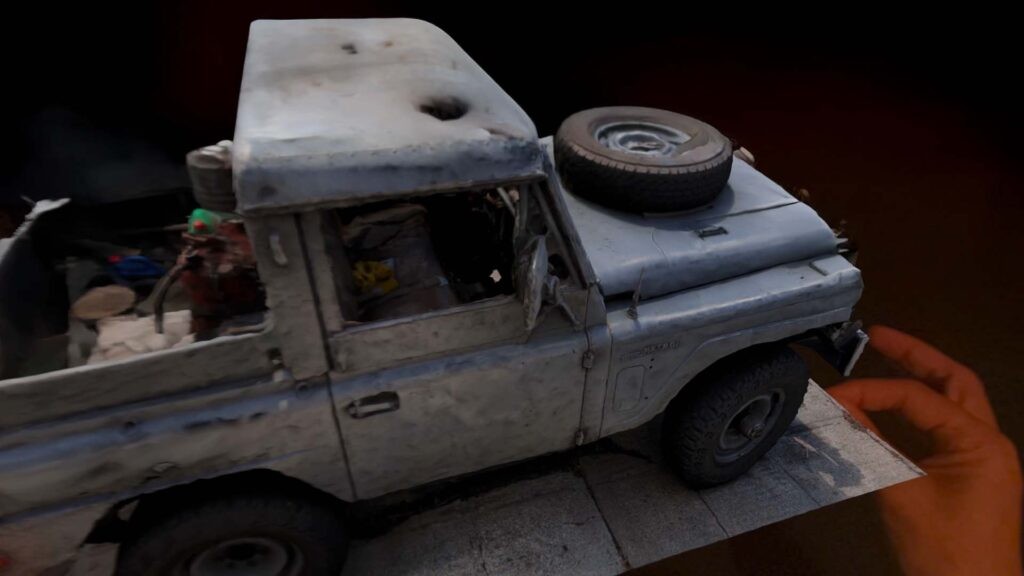
Gaussian Splatting in Automotive & Mechanical Engineering
Innovative Applications:
- Efficient Machine Maintenance: Engineers and technicians use Gaussian Splatting to create high-precision 3D models for training, inspections, and remote diagnostics.
- Production Boost through Digital Twins: Realistic 3D models generated with Gaussian Splatting allow workflow simulation and optimization.
Advantages:
- Reduced Downtime: Machine failures can be analyzed early, preventing breakdowns.
- Practical Training: Employees can use interactive 3D models to learn workflows.
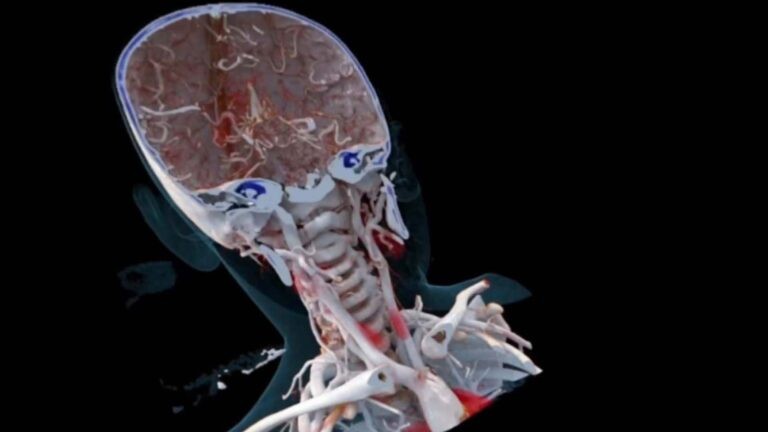
Gaussian Splatting in Healthcare & Medicine
Innovative Applications:
- Precise Surgical Planning: 3D models created using Gaussian Splatting enable realistic surgery preparation and accurate analysis of anatomical structures.
- Medical Training: Interactive 3D models with Gaussian Splatting support students and professionals in hands-on learning of medical procedures.
Advantages:
- Improved Patient Care: Surgical risks can be minimized, and treatments can be planned more accurately.
- More Efficient Training: Students benefit from immersive learning experiences.
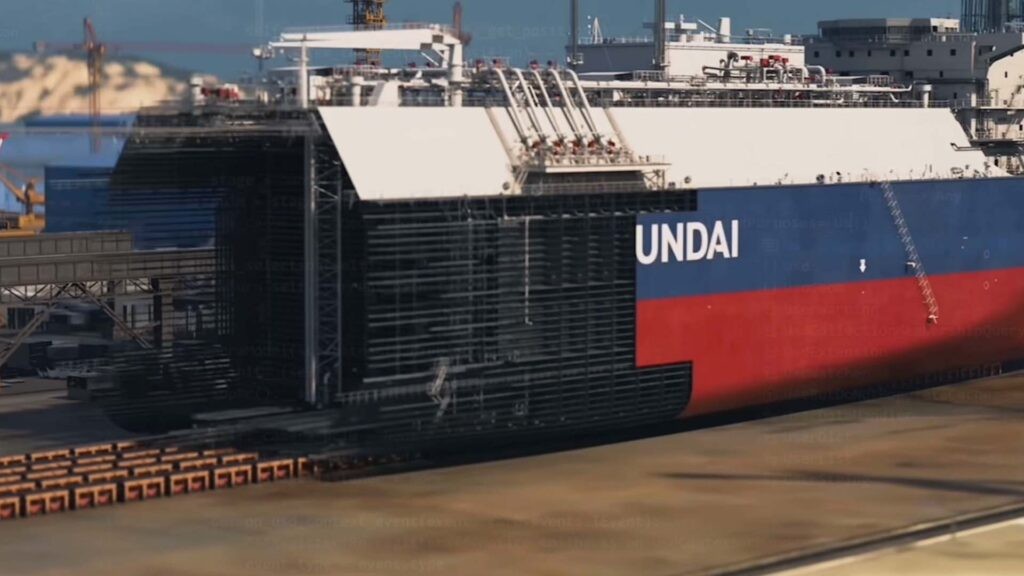
Gaussian Splatting in Gaming & Virtual Production
Innovative Applications:
- Real-Time Rendering for Games: Gaussian Splatting enables photorealistic 3D worlds with minimal computational effort.
- Virtual Film Productions: Hyper-realistic digital sets are created with Gaussian Splatting, revolutionizing film and advertising productions.
Advantages:
- Lower Production Costs: High-quality assets can be created faster and more cost-effectively.
- Greater Immersion: Realistic environments significantly enhance visual quality.
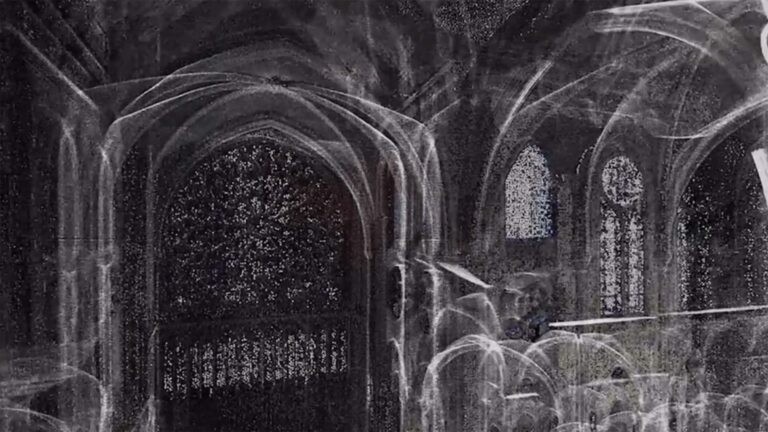
Gaussian Splatting in Monument Digitization
Innovative Applications:
- Monument Preservation through 3D Scans: Gaussian Splatting captures historical sites in detail and enables digital preservation.
- Virtual Reconstructions: Lost buildings can be realistically reconstructed with Gaussian Splatting and experienced in VR.
Advantages:
- Preserving Cultural Heritage: Digital 3D models allow long-term archiving and analysis of historical sites.
- Improving Accessibility: Museums and educational institutions can offer virtual tours.
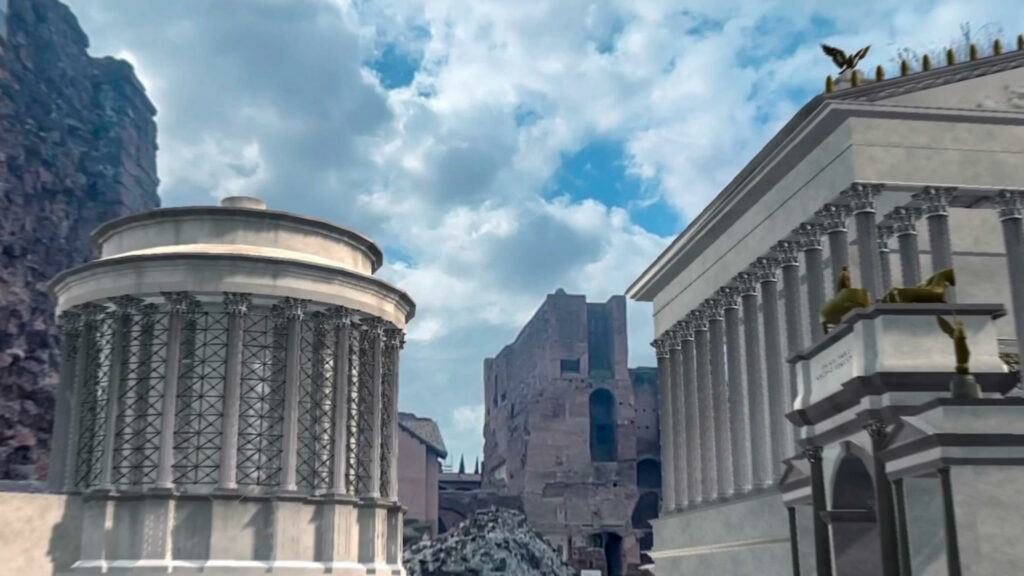
Gaussian Splatting in Virtual Tourism Experiences
Innovative Applications:
- Interactive Tour Guides: Landmarks worldwide can be experienced in immersive 3D environments through Gaussian Splatting.
- Experiencing Travel Culture: With Gaussian Splatting, cultural sites can be digitized in high quality for virtual tours.
- Accessible Experiences: People with mobility impairments can visit remote places virtually.
- Sustainable Tourism: Less physical travel reduces environmental impact through CO₂ emissions.
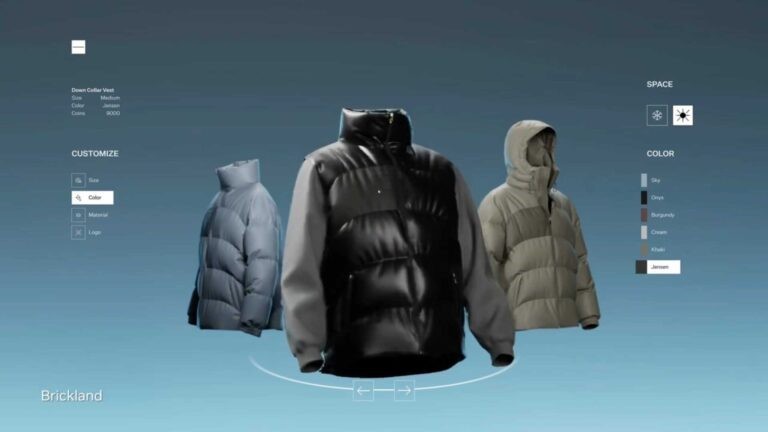
Gaussian Splatting in Fashion & Apparel Industry
Innovative Applications:
- Virtual Try-Ons: Gaussian Splatting enables realistic digital fitting of clothes, allowing customers to try products virtually.
- 3D Design and Prototyping: Designers can visualize garments accurately with Gaussian Splatting before producing physical samples.
Advantages:
- Fewer Returns: More accurate product representation reduces the likelihood of returns.
- Sustainable Production: Digital prototypes save material costs and reduce waste in the fashion industry.
Why Companies Choose Gaussian Splatting:
- Photorealistic Quality: Higher detail accuracy than traditional 3D scanning techniques.
- Fast Implementation: No complex modeling or post-processing required.
- Cost Savings: Reduces production costs for digital twins and product visualizations.
Interested?
- Personalized Consultation: Let’s discuss your requirements!
- Non-Binding Demo: Experience Gaussian Splatting live in an application of your choice.
Why Gaussian Splatting? Key Advantages at a Glance
Revolutionary 3D Technology: Gaussian Splatting creates photorealistic 3D models without complex post-processing or manual modeling.
Maximum Efficiency: Faster processing and lower storage requirements than traditional 3D models – ideal for VR, AR, and web applications.
Versatile Application: Perfect for architecture, industry, e-commerce, and training – from virtual showrooms to digital machine maintenance.
Automatic Lighting and Color Accuracy: Natural lighting and material properties are captured automatically – no complex shading or texturing required.
Cost-Efficient: No expensive 3D scanners or manual modeling needed – Gaussian Splatting works with standard cameras.
Gaussian Splatting Best Practices
Revolutionary 3D Visualization with Gaussian Splatting
Gaussian Splatting replaces traditional polygons with millions of adaptive splats, enabling photorealistic 3D models with realistic lighting and shadow effects – perfect for real-time applications in architecture, simulations, and digital twins.
Advantages:
- Realistic 3D models with dynamic lighting.
- Low computational load and fast rendering.
- Ideal for interactive simulations & digital twins.
Example:
Industrial companies use Gaussian Splatting for precise digital representations of their machines and systems.
Gaussian Splatting Best Practices
Next-Gen 3D Scanning with Gaussian Splatting
Gaussian Splatting revolutionizes 3D scanning through AI-powered processes that deliver highly accurate digital twins for architecture, industry, and design. With spatial computing, 3D models become immersive real-time experiences – efficient and impressive.
Advantages:
- Precise 3D scans with Gaussian Splatting and AI.
- Interactive experiences in mixed-reality environments.
- Versatile applications in industry & architecture.
Example:
Process optimization through Gaussian Splatting-based 3D models.
Read more about this work in our article: The Next Era of 3D Scanning
Gaussian Splatting Best Practices
Digital Heritage Preservation with Gaussian Splatting
Gaussian Splatting optimizes the preservation of historical structures through highly accurate 3D scans and AI-powered reconstructions – as seen in the restoration of Notre-Dame.
Advantages:
- Detailed 3D models for restoration and archiving.
- Virtual reconstruction of damaged structures.
- Efficient planning through digital twins.
Example:
Notre-Dame was digitally reborn with Gaussian Splatting.
How to GET STARTED.
Your Path to Photorealistic 3D Models with Gaussian Splatting
We analyze your project and recommend the optimal Gaussian Splatting solution.
You provide image material or we conduct a high-resolution scan.
We convert your data into a detailed 3D model using Gaussian Splatting.
Delivery for VR, AR, web viewers, or interactive applications.
Our process makes it easy to use photorealistic 3D models for various applications.
What to Expect from Our Gaussian Splatting Demo:
Practical Examples:
See how Gaussian Splatting is used in industry, architecture, and marketing.
Interactive 3D Models:
Experience how objects can be rotated, zoomed, and explored in real time.
Personalized Consultation:
We show you how to optimally use Gaussian Splatting for your specific needs.
FAQ about Gaussian Splatting
What is Gaussian Splatting and how does it work?
Gaussian Splatting is an innovative method for 3D visualization that represents point clouds with color information. Unlike traditional 3D models based on polygon meshes, Gaussian Splatting uses thousands of small, overlapping Gaussian points to create a highly realistic representation.
How it works:
- Capturing the scene: A camera or 3D scanner captures images or point clouds of the environment.
- Data processing: Specialized algorithms compute the Gaussian points based on color, depth, and transparency values.
- Rendering: The generated points are combined into a highly detailed, photorealistic 3D model.
Key features:
- Enables highly realistic 3D representations with smooth transitions.
- Requires less storage compared to traditional polygon meshes.
- Ideal for real-time rendering in VR, AR, and web applications.
This technology is increasingly used in fields such as architecture, product visualization, gaming, and industrial applications, as it provides a fast and efficient way to create realistic digital twins.
What are the differences between Gaussian Splatting and traditional 3D scanning?
Gaussian Splatting vs. traditional 3D scanning
Gaussian Splatting and traditional 3D scanning serve similar purposes but differ significantly in methodology, processing speed, and application.
Key differences:
- Data Structure: Traditional 3D scanning produces polygon meshes or dense point clouds, while Gaussian Splatting uses probabilistic Gaussian points for smoother transitions and better visual fidelity.
- Processing Time: Gaussian Splatting allows for faster processing since it does not require extensive manual retouching and mesh optimization.
- File Size: Gaussian Splatting typically results in more lightweight models compared to high-resolution polygon meshes, making it more efficient for web and real-time applications.
- Rendering Quality: Gaussian Splatting creates highly realistic, soft-edged models, while traditional methods often struggle with rigid edges and require additional texture mapping for realism.
- Use Cases: Traditional 3D scanning is commonly used for precise industrial measurements, while Gaussian Splatting is ideal for immersive visualization in VR, AR, and web-based applications.
Which method should you choose?
If you need exact measurements for engineering or manufacturing, traditional 3D scanning may be the better choice. However, for high-quality visualizations with minimal processing, Gaussian Splatting offers a faster and more efficient alternative.
What are the benefits of Gaussian Splatting for businesses?
Gaussian Splatting offers numerous advantages for businesses, particularly in fast and highly realistic 3D visualization. By eliminating the need for traditional polygon models, this technology enables more efficient and flexible representation of complex objects—ideal for applications in industry, marketing, architecture, and beyond.
- Efficiency and Speed: Models can be created and processed faster than with conventional 3D scanning methods.
- High Level of Detail: Even the finest surface structures are captured without extensive manual post-processing.
- Small File Sizes: Optimized data allows seamless use in web applications, VR, AR, and interactive product showcases.
- Cost Savings: Reduced computational requirements and streamlined processes lower the financial effort for 3D visualizations.
- Easy Integration: The technology is highly versatile, from virtual training to digital twins and e-commerce platforms.
With these benefits, Gaussian Splatting empowers businesses to use their 3D models more efficiently, with greater detail and interactivity—striking the perfect balance between quality and performance.
In which industries is Gaussian Splatting used?
Gaussian Splatting is used in various industries that benefit from high-detail and efficient 3D visualizations. The technology excels in fields requiring photorealistic representations and fast data processing.
- Architecture & Construction: Realistic 3D models for virtual walkthroughs, urban planning, and design presentations.
- Industry & Mechanical Engineering: Digital twins for maintenance, production, and process optimization.
- Automotive & Aerospace: Precise visualizations of vehicles and components for design and training purposes.
- Marketing & E-Commerce: Interactive 3D representations of products for online stores and advertising campaigns.
- Medicine & Research: Detailed 3D reconstructions for medical analysis, training, and simulations.
- Entertainment & Gaming: Creation of realistic environments and characters for immersive gaming experiences.
Which hardware is required for Gaussian Splatting?
Gaussian Splatting does not require specialized high-end hardware, making it particularly flexible and accessible. The technology primarily utilizes GPUs for fast processing of large datasets and efficient computation of point clouds.
Recommended Hardware:
- Graphics Card (GPU): A powerful NVIDIA or AMD GPU with CUDA or OpenCL support significantly improves processing speed.
- Processor (CPU): Modern multi-core CPUs accelerate data processing but are not the most critical component.
- RAM: At least 16 GB is recommended, especially for high-resolution 3D scenes.
- Camera or 3D Scanner: High-quality cameras (e.g., DSLR, mirrorless) or LiDAR scanners enhance the quality of input data.
Although Gaussian Splatting works on many systems, businesses and professionals benefit from powerful GPUs and high-quality imaging sources for optimal results.
Can I perform Gaussian Splatting with a standard camera?
Yes, Gaussian Splatting can be performed using a conventional camera as long as it is capable of capturing high-resolution images or videos. Cameras with good light sensitivity and high image quality are particularly suitable since the process heavily relies on the quality of the input data.
For optimal results, a camera with a wide-angle or fisheye lens is recommended, as it captures more visual information per shot. Alternatively, modern smartphones with high-quality cameras can also be used, but the stability and precision of the captures are crucial for achieving a high-quality 3D model.
Is Gaussian Splatting suitable for real-time applications?
Yes, Gaussian Splatting is generally suitable for real-time applications, particularly for Virtual Reality (VR), Augmented Reality (AR), and web-based 3D visualizations. Since the technique is based on point clouds with memory-optimized color information, it allows for highly realistic 3D models that can be efficiently rendered on modern GPU hardware.
However, actual real-time performance depends on several factors:
- Hardware performance: High-end GPUs (e.g., NVIDIA RTX series) accelerate computation and enable smooth real-time visualizations.
- Optimization of point data: High-detail models require data reduction and efficient Level of Detail (LOD) management to remain real-time capable.
- Software support: Tools like WebGL, Unreal Engine, or Unity support the integration of Gaussian Splatting models for interactive applications.
For industrial applications, interactive product presentations, or VR training, Gaussian Splatting is a promising solution.
Which software is used for Gaussian Splatting?
There are several specialized software solutions for Gaussian Splatting used for creating, processing, and visualizing 3D point clouds. The choice of software depends on the specific application.
Common software tools include:
- NeRF-based rendering: Gaussian Splatting is often combined with Neural Radiance Fields (NeRF). Tools like Nerfies or NeRF offer implementations for this approach.
- 3D scanning software: Applications like RealityCapture, Agisoft Metashape, or Meshroom assist in generating point clouds that can be optimized for Gaussian Splatting.
- Rendering engines: Modern engines such as Unity and Unreal Engine increasingly support point cloud rendering and can display Gaussian Splatting models in real time.
- Web technologies: WebGL and Three.js enable the integration of Gaussian Splatting models directly in the browser.
The choice of software depends on whether the focus is on visualization, editing, or real-time rendering.
How large are the 3D files generated by Gaussian Splatting compared to other 3D scanning methods?
Gaussian Splatting generates significantly smaller file sizes compared to traditional 3D scanning methods, as it relies on an efficient point cloud representation rather than complex polygon meshes.
Differences from other 3D scanning methods:
- Lower storage requirements: Compared to high-resolution polygon meshes (e.g., OBJ or STL), Gaussian Splatting requires less storage space, as it stores optimized point clouds instead of surface-based geometries.
- Faster loading times: The reduced file size allows for faster processing and display, particularly in web and real-time applications.
- Higher efficiency in data processing: While traditional 3D scans often produce large files that require post-processing and optimization, Gaussian Splatting models are ready to use immediately.
The exact file size depends on the complexity of the model and the chosen point cloud resolution but is generally much smaller than traditional mesh models.
How realistic are the 3D models created with Gaussian Splatting?
3D models created with Gaussian Splatting exhibit exceptional photorealism. Thanks to its unique point cloud technology, lighting, colors, and material properties are captured and rendered with high accuracy.
Features of realistic rendering:
- Accurate lighting effects: Gaussian Splatting not only captures an object's geometry but also its light reflections and shadow casting, resulting in highly realistic visuals.
- Smooth transitions: Since no rigid polygon structures are used, natural, soft edges and seamless material blending are achieved.
- Rich color dynamics and textures: The method preserves fine color details, making Gaussian Splatting models appear highly lifelike while reducing the need for manual post-processing.
Gaussian Splatting is particularly well-suited for applications in architecture, product visualization, and VR/AR, as it provides immersive realism without extensive manual adjustments.
Is Gaussian Splatting suitable for industrial applications?
Gaussian Splatting is highly suitable for industrial applications, especially in sectors that rely on high-detail and efficient 3D visualization. This technology enables the rapid creation of photorealistic 3D models and is ideal for industrial use cases such as:
- Factory planning and digital twins: Optimization of production processes through accurate virtual models.
- Industrial maintenance and training: Creation of interactive 3D simulations for employee training or remote maintenance.
- Product development and prototyping: Faster design iterations with realistic models that can be easily reviewed and adjusted.
Although Gaussian Splatting does not provide the same metric precision as some specialized industrial 3D scanning technologies, it remains a cost-effective solution for many industrial applications requiring real-time visual representation.
Can Gaussian Splatting be used for historical or cultural reconstructions?
Gaussian Splatting is highly suitable for historical and cultural reconstructions as it enables detailed, photorealistic representations of buildings, artworks, and archaeological sites. This technology offers several advantages in this field:
- Preservation of cultural heritage: Historical buildings or artworks can be digitally captured and preserved for future generations.
- Virtual museums and exhibitions: Creation of interactive 3D models for online exhibitions or immersive VR experiences.
- Archaeological documentation: Accurate reconstruction of excavations and artifacts without physical intervention.
Thanks to its ability to efficiently visualize large and complex structures, Gaussian Splatting is a valuable tool for historians, museums, and heritage conservation experts.
What are the disadvantages of Gaussian Splatting?
Although Gaussian Splatting offers many advantages, there are some limitations that should be considered depending on the application:
- Limited editing options: Unlike polygon-based models, point clouds are more difficult to modify or edit afterward.
- Higher computational requirements: Processing and rendering Gaussian Splatting require powerful GPUs, especially for real-time applications.
- Data compatibility: Not all existing 3D software solutions natively support Gaussian Splatting, which may complicate integration into established workflows.
- Limitations in high-precision scans: For industrial applications that require extremely accurate measurements (e.g., in mechanical engineering), traditional 3D scanning methods are often more precise.
Despite these drawbacks, Gaussian Splatting remains a promising technology for various applications, particularly in visualization and interactive 3D rendering.
How long does it take to process a 3D model with Gaussian Splatting?
The processing time of a 3D model using Gaussian Splatting depends on several factors:
- Quality and scope of input data: High-resolution images or scans require more computing power and time.
- Hardware performance: Modern GPUs significantly speed up processing, whereas older or less powerful systems take longer.
- Level of optimization: The time required varies depending on whether a highly detailed or optimized version of the model is needed.
Generally, the processing of Gaussian Splatting models takes anywhere from a few seconds to several minutes, depending on the size of the point cloud and the hardware used.
Can I use the 3D models generated with Gaussian Splatting in VR or AR?
Yes, 3D models generated with Gaussian Splatting can be used in VR and AR applications.
- Compatibility: The generated models are lightweight and can be integrated into WebGL, Unity, Unreal Engine, and other 3D platforms.
- Efficiency: Due to their memory-efficient representation, Gaussian Splatting models are particularly well-suited for real-time applications in VR and AR.
- Interactivity: The technology enables seamless rendering of 3D objects with high visual quality and realistic lighting.
For optimal use in VR or AR, the models may need to be converted into the appropriate format supported by the target platform.
How can I use Gaussian Splatting for my business?
Gaussian Splatting can be used in various business applications to optimize processes, enhance product visualization, and create innovative solutions.
- Product Visualization: Companies can create highly detailed 3D models for interactive product presentations, marketing campaigns, and online stores.
- Architecture & Real Estate: Buildings, interiors, or city models can be efficiently captured in 3D for virtual tours and planning.
- Industry & Manufacturing: Digital twins help optimize production processes, enable maintenance simulations, and improve training programs.
- Cultural & Historical Reconstructions: Museums and cultural organizations can digitally preserve and interactively present valuable artifacts.
- Education & Training: Training and educational programs in AR/VR benefit from immersive 3D environments created with Gaussian Splatting.
To integrate Gaussian Splatting into your business, specific workflows may be required. Consult with experts to determine the best solution for your needs.
Is Gaussian Splatting a cost-effective alternative to traditional 3D scanning?
Gaussian Splatting can be a cost-effective alternative to traditional 3D scanning, especially for applications requiring real-time visualization and efficiency.
- Lower Hardware Costs: Unlike traditional 3D scanning, expensive LiDAR or structured-light scanners are often unnecessary – a standard camera may suffice.
- Reduced Post-Processing: Traditional 3D scans typically require extensive manual refinement, whereas Gaussian Splatting generates immediately usable 3D models.
- Smaller File Sizes: Gaussian Splatting models are often more compact than polygon-based 3D models, making storage and sharing easier.
- Faster Processing: AI-powered algorithms enable Gaussian Splatting to deliver detailed results faster than many conventional methods.
Whether Gaussian Splatting is the right solution for your business depends on specific requirements. It is particularly suitable for visual applications, interactive web experiences, and VR/AR environments.
How can I start a Gaussian Splatting project with Visoric?
Starting a Gaussian Splatting project with Visoric is simple and follows a few key steps.
- Free Initial Consultation: Contact us to discuss your requirements and explore how Gaussian Splatting can benefit your project.
- Data Collection & Analysis: Provide existing images or 3D scans, or let us capture high-resolution data for you.
- Processing & Optimization: Our team uses Gaussian Splatting to generate detailed and optimized 3D models.
- Integration & Deployment: We assist in seamlessly integrating the models into your preferred platforms, such as web, VR, or AR.
Whether for interactive product visualizations, simulations, or digital twins – we support you at every step. Get in touch for a no-obligation consultation!

